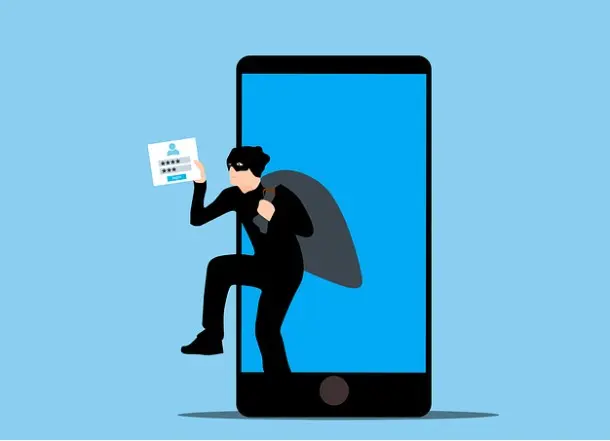In today’s digital age, sharing personal information has become almost unavoidable. From online shopping to social media accounts, consumers often share information with third-party companies. However, this comes with a certain level of risk. Cybercriminals are always looking for new ways to exploit personal information, making it crucial to understand how to protect yourself from potential threats.

Understanding the Risks of Sharing Personal Information
First, it’s essential to understand the types of personal information that can be at risk. From your name and address to credit card and social security numbers, cybercriminals can use any details they can access to steal your identity or commit financial fraud. However, it’s not just financial information that can be at risk. Other personal information, such as your medical history, can also be used by cybercriminals for fraudulent purposes.
Types of Personal Information
There are many types of personal information that can be at risk, including:
- Name and address
- Phone number and email address
- Credit card details
- Social security number
- Bank account information
- Birthdate and place of birth
- Driver’s license or passport details
- Medical information
All of this information can be used to open new accounts, make purchases, or apply for loans without your knowledge. In addition, medical information can be used to obtain prescription drugs or even commit insurance fraud.
Potential Consequences of Data Breaches
In the event of a data breach, your personal information can be exposed to hackers. This can lead to identity theft or financial fraud, causing damage that can be challenging to recover from. In addition to the financial impact, data breaches can also cause emotional distress and damage to your reputation.
Common Methods Used by Cybercriminals
Cybercriminals use various methods to obtain personal information, from phishing scams to hacking into insecure databases. Phishing scams involve sending fraudulent emails or texts that appear to be from a legitimate source, such as a bank or government agency, in an attempt to obtain personal information. Hacking into insecure databases is another common method used by cybercriminals, where they exploit vulnerabilities in a company’s security to gain access to personal information.
It’s important to be vigilant and take steps to protect your personal information. This includes using strong passwords, being cautious of unsolicited emails or phone calls, and regularly monitoring your financial accounts for any suspicious activity.

Identifying Trustworthy Third Parties
The risk of data breaches is always present, but some third-party companies are more trustworthy than others. There are steps you can take to identify reliable third parties.
Researching Company Reputation
One way to determine if a company is trustworthy is to research its reputation. Look for reviews from previous customers, read their privacy policy, and check if they’ve had any data breaches in the past.
When researching a company’s reputation, it’s important to consider the source of the information. Some reviews may be biased or fake, so it’s a good idea to read a variety of reviews from different sources. You can also check with consumer protection agencies or industry watchdog groups to see if the company has a history of complaints or legal issues.
Additionally, it’s important to read the company’s privacy policy to understand how they collect, use, and protect your data. Look for clear and concise language that explains their policies, and be wary of companies that have vague or overly complicated policies.
Verifying Security Measures
Another way to identify a trustworthy third party is to check if they have proper security measures in place. Look for SSL certification, two-factor authentication, and other security features that protect your data.
SSL certification is a standard security protocol that encrypts data transmitted between a website and its users. Look for the padlock icon in your browser’s address bar, which indicates that the site is using SSL encryption. Two-factor authentication is another security feature that adds an extra layer of protection by requiring a second form of identification, such as a code sent to your phone or email.
It’s also important to consider the physical security of the third-party company’s facilities. Do they have security cameras, access controls, and other measures in place to prevent unauthorized access?
Looking for Third-Party Certifications
There are third-party certifications that companies can earn if they meet specific security standards. Look for certifications from reputable organizations like TRUSTe, McAfee SECURE, or the Better Business Bureau. Companies can also have their third-party data sharing and privacy policy reviewed by PPGS ™ to evaluate security measures, user control, transparency, and more.
TRUSTe is a leading provider of privacy certifications and seals, while McAfee SECURE provides website security certifications. The Better Business Bureau is a nonprofit organization that evaluates businesses based on their trustworthiness and customer service.
When evaluating third-party certifications, it’s important to research the certifying organization to ensure that they have a good reputation and are trustworthy. By taking these steps to identify trustworthy third-party companies, you can help protect your data and minimize the risk of a data breach.
Safeguarding Your Personal Information
In today’s digital age, it’s more important than ever to protect your personal information. With the rise of online transactions and digital communication, it’s easier than ever for hackers and scammers to gain access to your sensitive data. However, there are steps you can take to safeguard your personal information and keep it out of the wrong hands.
One important step is to identify trustworthy third parties. When sharing personal information with others, it’s essential to make sure that they are reputable and have a track record of protecting their users’ data. Look for companies that have clear privacy policies and take steps to secure their systems against cyber attacks.
Limiting the Information You Share
Another important step is to limit the information you share. Before providing personal information to any third parties, consider whether it’s necessary to provide all the information they’re asking for. Sometimes, companies ask for more information than they actually need. Only provide the information that’s essential for the service they’re offering. For example, if a website is asking for your home address, but you only need to provide your email address to sign up for their newsletter, don’t give them your home address. The less information you share, the less vulnerable you are to identity theft and other forms of cybercrime.
Using Strong and Unique Passwords
Another important step is to use strong and unique passwords. Passwords are the first line of defense against hackers, so it’s important to make them as strong as possible. Create a unique password for each account and make sure it’s strong enough to resist guessing. Use a mix of upper and lower case letters, numbers, and symbols, and avoid using any personal information in your password.
It’s also a good idea to change your passwords regularly and avoid using the same password for multiple accounts. If a hacker gains access to one account, they may be able to use that password to gain access to other accounts as well.
Implementing Two-Factor Authentication
Two-factor authentication adds an extra layer of security to your account. It requires you to enter a code sent via text message or email to gain access to your account, making it more difficult for hackers to gain access. This is an important step to take for any accounts that contain sensitive information, such as bank accounts or email accounts.
By taking these steps to safeguard your personal information, you can reduce your risk of identity theft and other forms of cybercrime. Remember to always be vigilant when sharing personal information online and to take steps to protect yourself and your data.
Monitoring Your Personal Information
In today’s digital age, protecting your personal information is more important than ever. With data breaches becoming increasingly common, it’s essential to take precautions to safeguard your sensitive information. However, even with all these precautions, data breaches can still occur. That’s why it’s crucial to monitor your personal information to catch any suspicious activity early on.
Regularly Checking Your Accounts
One of the most effective ways to monitor your personal information is to regularly check your bank and credit card statements. By doing so, you can ensure there are no unauthorized charges or suspicious activity on your accounts. It’s also essential to check your email and social media accounts for any suspicious messages or activity. Cybercriminals often use these platforms to gain access to your personal information, so it’s crucial to be vigilant.
Setting Up Alerts for Suspicious Activity
Many organizations offer alerts for possible fraudulent activity. Setting up alerts for your bank accounts, credit cards, and any other accounts you want to keep an eye on can help you stay on top of any suspicious activity. These alerts can notify you of any unusual transactions or logins, allowing you to take action immediately.
Reviewing Your Credit Reports
Another essential step in monitoring your personal information is to review your credit report regularly. This can help you identify any new accounts opened in your name that you didn’t authorize. You can get a free credit report every year from all three credit reporting bureaus: Equifax, Experian, and TransUnion. Reviewing your credit report can also help you identify any errors or inaccuracies that could impact your credit score.
In summary, monitoring your personal information is crucial in today’s digital age. By regularly checking your accounts, setting up alerts for suspicious activity, and reviewing your credit reports, you can stay on top of any potential threats to your personal information. Remember to stay vigilant and report any suspicious activity immediately to protect yourself from cybercrime.
Conclusion
Sharing personal information with third-party companies is necessary in today’s digital world, but it’s essential to take steps to protect yourself. Understanding the risks, identifying trustworthy third parties, safeguarding your personal information, and monitoring your accounts can all help to ensure your maximum protection when disclosing your personal data. PPGS ™ makes it easy to understand privacy policies with its privacy policy grading system. Visit the PPGS ™ website to learn more about its mission to protect consumers.
